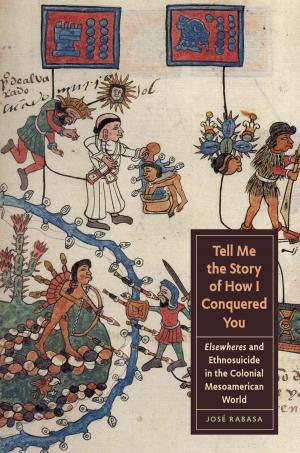Inka History in Knots
Reading Khipus as Primary Sources
Nonfiction, History, Americas, South America, Social & Cultural Studies, Social Science, Archaeology| Author: | Gary Urton | ISBN: | 9781477312643 |
| Publisher: | University of Texas Press | Publication: | April 4, 2017 |
| Imprint: | University of Texas Press | Language: | English |
| Author: | Gary Urton |
| ISBN: | 9781477312643 |
| Publisher: | University of Texas Press |
| Publication: | April 4, 2017 |
| Imprint: | University of Texas Press |
| Language: | English |
Inka khipus—spun and plied cords that record information through intricate patterns of knots and colors—constitute the only available primary sources on the Inka empire not mediated by the hands, minds, and motives of the conquering Europeans. As such, they offer direct insight into the worldview of the Inka—a view that differs from European thought as much as khipus differ from alphabetic writing, which the Inka did not possess. Scholars have spent decades attempting to decipher the Inka khipus, and Gary Urton has become the world's leading authority on these artifacts.In Inka History in Knots, Urton marshals a lifetime of study to offer a grand overview of the types of quantative information recorded in khipus and to show how these records can be used as primary sources for an Inka history of the empire that focuses on statistics, demography, and the "longue durée" social processes that characterize a civilization continuously adapting to and exploiting its environment. Whether the Inka khipu keepers were registering census data, recording tribute, or performing many other administrative tasks, Urton asserts that they were key players in the organization and control of subject populations throughout the empire and that khipu record-keeping vitally contributed to the emergence of political complexity in the Andes. This new view of the importance of khipus promises to fundamentally reorient our understanding of the development of the Inka state and the possibilities for writing its history.
Inka khipus—spun and plied cords that record information through intricate patterns of knots and colors—constitute the only available primary sources on the Inka empire not mediated by the hands, minds, and motives of the conquering Europeans. As such, they offer direct insight into the worldview of the Inka—a view that differs from European thought as much as khipus differ from alphabetic writing, which the Inka did not possess. Scholars have spent decades attempting to decipher the Inka khipus, and Gary Urton has become the world's leading authority on these artifacts.In Inka History in Knots, Urton marshals a lifetime of study to offer a grand overview of the types of quantative information recorded in khipus and to show how these records can be used as primary sources for an Inka history of the empire that focuses on statistics, demography, and the "longue durée" social processes that characterize a civilization continuously adapting to and exploiting its environment. Whether the Inka khipu keepers were registering census data, recording tribute, or performing many other administrative tasks, Urton asserts that they were key players in the organization and control of subject populations throughout the empire and that khipu record-keeping vitally contributed to the emergence of political complexity in the Andes. This new view of the importance of khipus promises to fundamentally reorient our understanding of the development of the Inka state and the possibilities for writing its history.















